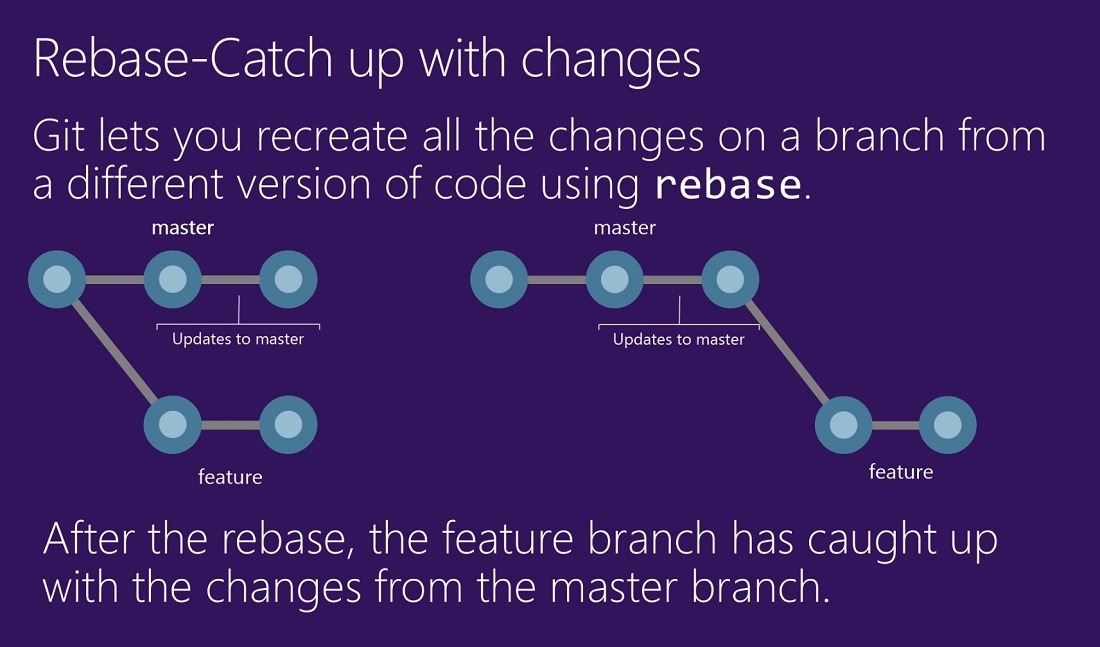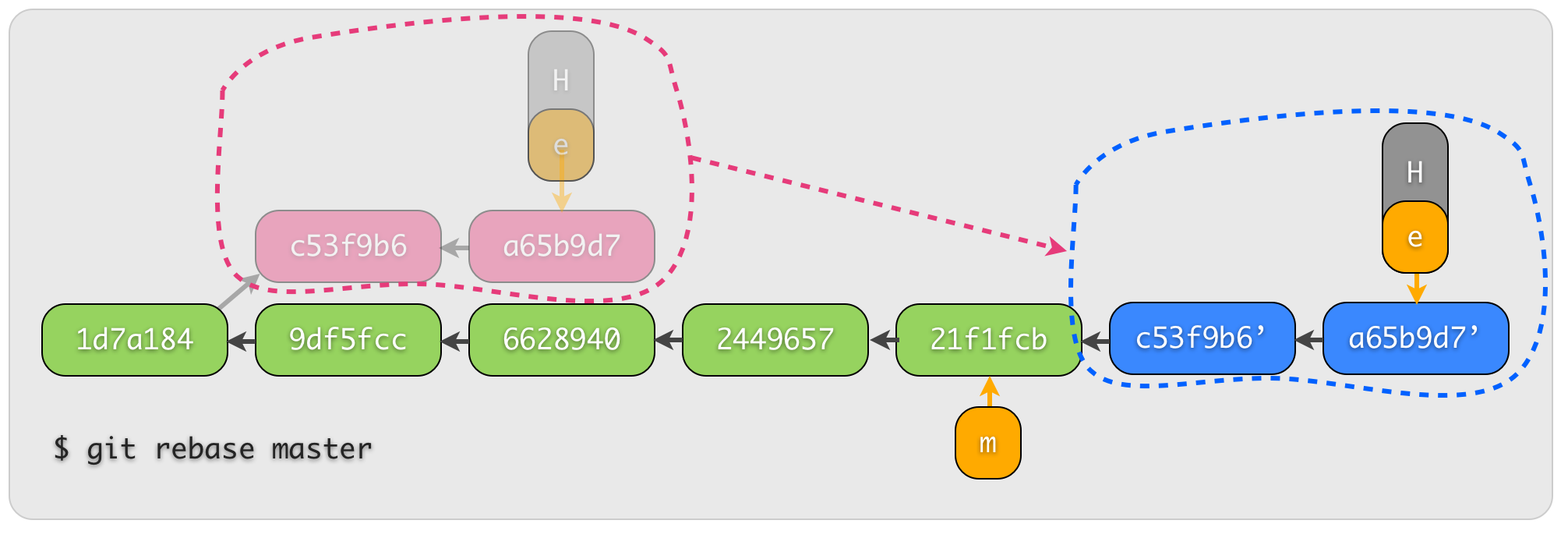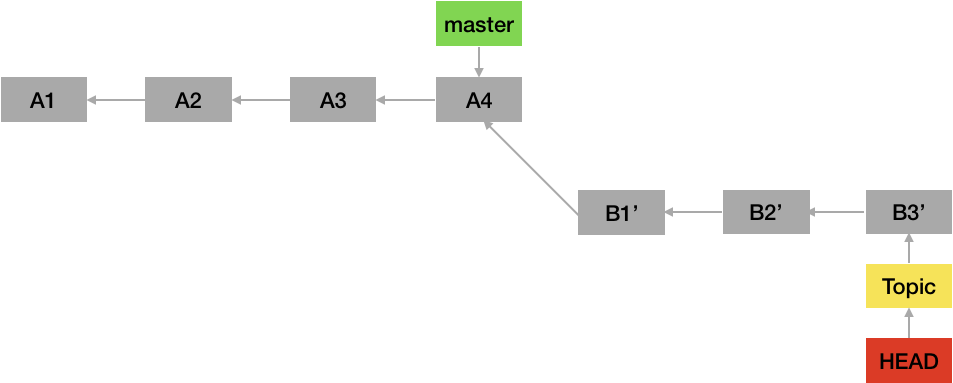

Let’s say, you created feature branch A, and someone else created feature branch B. Whenever we create a feature branch, the feature branch is created off of a specific branch, typically the latest commit of the master branch.Īs there are more people working on a project, other feature branches are created.
#Rebase branch with master git software#
Git-log -graph can also help to shed some additional light as to what is going on.During software development, it is typical to have a master or a main branch and multiple feature branches. This history can now be shared and everyone will be happy. You'll notice the extra commit that represents the merge of the two previous commits. Now assume, instead of rebasing b1 on top of master, you just merged master into b1, your log would look like this: $ git checkout b1ĥ18eb2dc6b2da0ff43ddd6837332031cc00eaad1 Merge remote-tracking branch 'origin/master' into b1 If you commit this change to your public repo, you now have two commits that have the same work done in them and it causes problems. You'll notice that the "added foo2 in b1" commit has a different id than in the previous log commands. I ran these right before running the rebase command: $ git log -pretty=oneline origin/masterĩb077261d1619803213201d5c7cefb757eb66b67 Changed foo in masterĩ11ce5b247e79682ec9f73ad9a15fd3167b7e76d Added fooĦ3a57ef54e301314a9dab38de0cd9d88c59a5fba added foo2 in b1Īnd now after performing the rebase, origin/master and origin/b1 are the same, but b1 is now: $ git log -pretty=oneline b1Ħ687c64c37db0ee21a4d87e45d6ccb0913b8686d added foo2 in b1 You can see all of this by issuing some git-log commands as you perform your example. The reason this is bad, is that if you share your commits publicly, and others start additional work based on those commits, then you go an change those commits, your trees are no longer in sync. Now when you "change history" by rebasing commits on top of new commits, you're changing the parent pointer of commits you've already made, which in turns changes the id of your commits. From that you'll learn that commits consist of a pointer to a tree object (snapshot of the files) and a pointer to the parent commit. Now, what does that mean and why is it bad? First, I would suggest reading this section of the Git book.

The reason you do not want to rebase commits that you have pushed to a public repository is because the git-rebase command changes history. What's the relation between the above scenario and the procedure I described in this post. I guess it is somehow related, and if not I would love to know why. What's going on here? What is the danger, how should one proceed? How should the history be kept consistent? What is the interplay between the case described above and the following citation:ĭo not rebase commits that you have pushed to a public repository.

According to this answer, this is more or less it, and in his comment explicitly say that I don't need to do a pull. So what does this warning mean? I expected I should do a git push, git suggests to do git pull. Nothing to commit, working directory cleanĪt this point the content of foo in the branch b1 is change foo as well. # (use "git pull" to merge the remote branch into yours) # and have 2 and 1 different commit each, respectively. # Your branch and 'origin/b1' have diverged, $ git checkout b1Īt this point git st returns: # On branch b1 Finally, I want to sync b1 with the progress made in master. $ git commit -a -m "changed foo in master"Īt this point in master the file foo contain changed foo, while in b1 it is still hello world. Now it is time to switch back to master and change something there: $ echo "change foo" > foo Next, lets branch, add a file and set an upstream for the new branch b1: $ git checkout -b b1

In order to link repo to bare.git I ran $ git remote add origin. Which is then added and committed: $ git add foo Then add a file foo $ echo "hello world" > foo Let's start a repository in ~/tmp/repo: $ git init
#Rebase branch with master git how to#
I'm failing to understand how to use git-rebase, and I consider the following example.


 0 kommentar(er)
0 kommentar(er)
